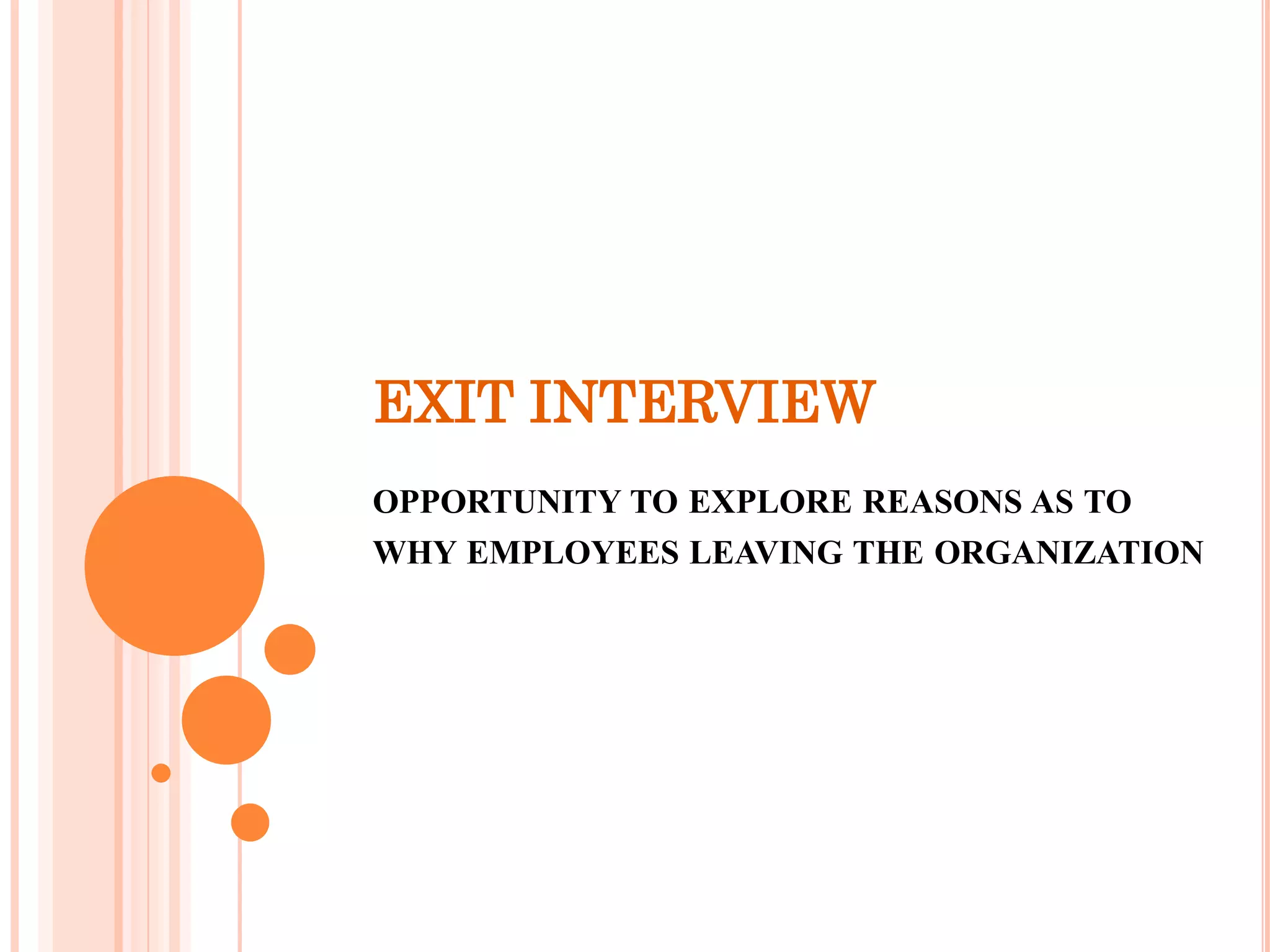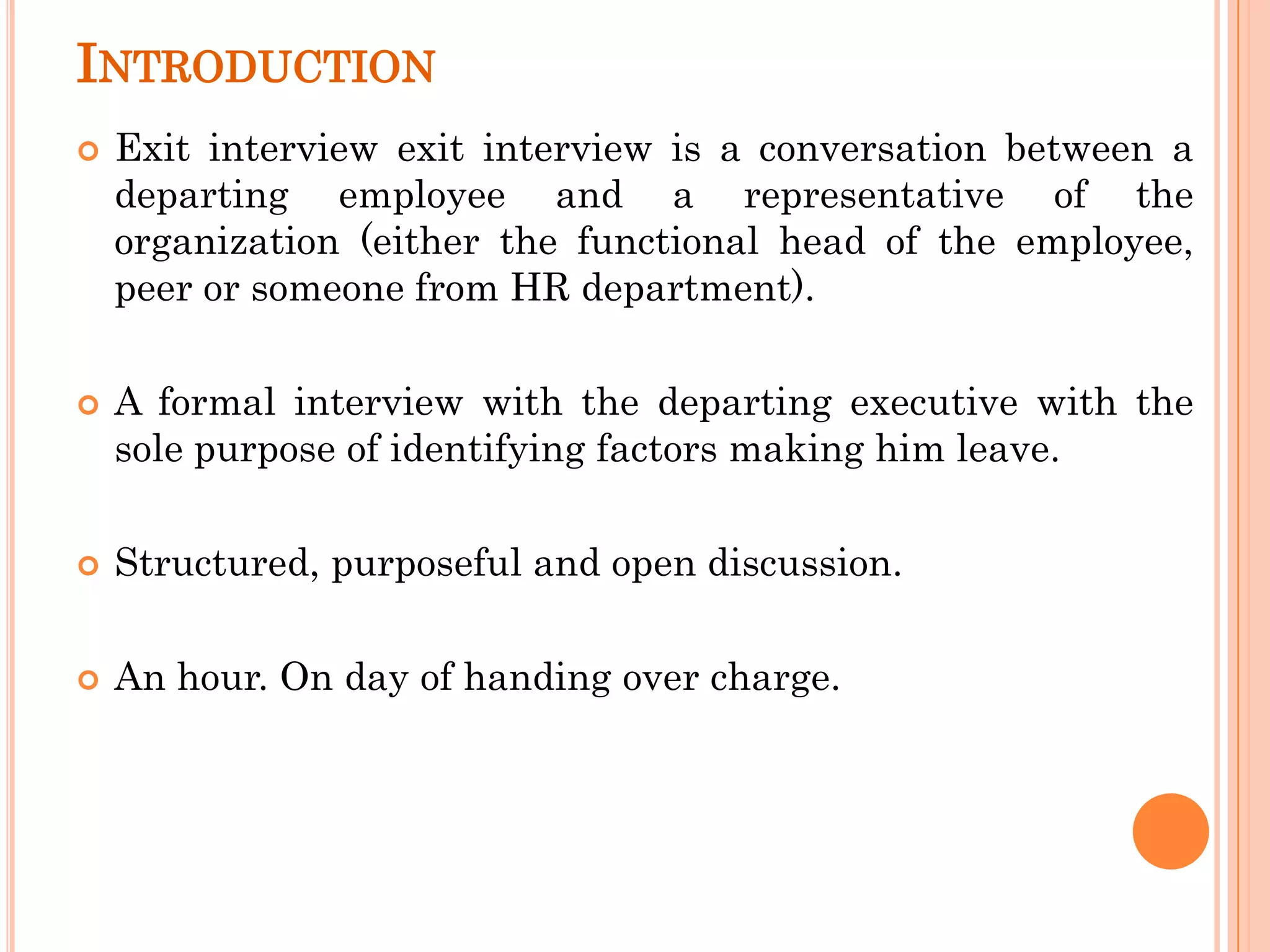Exit interviews provide valuable feedback from departing employees about their reasons for leaving and their experience working at an organization. They can identify factors that negatively impact employee retention like lack of career growth, low morale, and poor work-life balance. Conducting exit interviews, along with follow up analysis and implementing improvements, can help reduce turnover and strengthen employee engagement. While exit interviews traditionally occur at departure, stay interviews conducted periodically with current staff can also provide useful insights for retaining top talent. When used effectively, exit and stay interviews are important tools for organizational learning and improvement.















